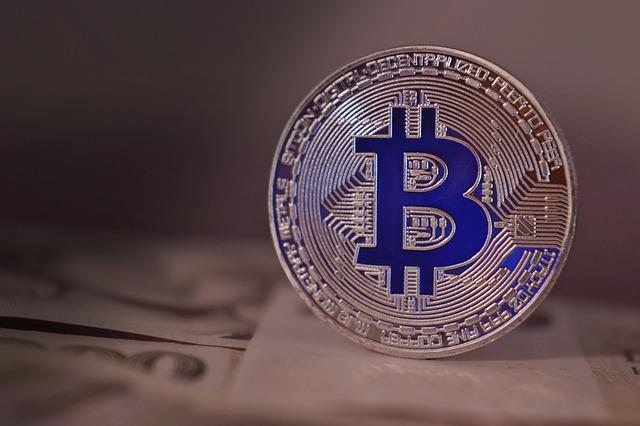Transferring money via bank transfers is a safe, secure method. They can be used to transfer funds between accounts in the same bank or another bank. Transfers can be made from and to businesses or individuals.
There are several ways to make a transfer. These include traditional methods, such as using your own bank. They also include new apps and services, like PayPal and Venmo. But what do you need to know before making a bank transfer?
What is a bank transfer?
Bank transfers are an easy, secure and fast way to transfer money between accounts. They can be used for paying suppliers, completing customer transactions and much more. There are many ways to make a bank transfer, including online banking, phone banking and in-person at your local branch. However, nowadays there are many cases of bank transfer scams, that can be solved using www.refundee.com/revolut.
In the banking world, a bank transfer can be referred to as a “wire transfer”. However, a wire transfer has more specific meaning in the legal world and refers to one particular method of transferring funds between banks or financial institutions. A wire transfer involves an electronic transaction where the parties involved share the necessary information to complete the payment. (For example, the sender’s name, bank account numbers, amount to transfer, and if needed, the pickup address)
There are several types of bank transfers, and processing times can vary. For example, a check is usually processed the same day it’s received by your bank. Mobile deposits may take up to several business day before they appear in your bank account. A wire transfer, on the other hand, is often processed within one business day if it’s sent to a bank located in the same country as your own, but it can also take up to two business days if it’s being sent internationally.
A bank transfer can be a convenient way to move money from one account to another, for example, when paying a utility bill or making an investment. Be aware of the risks that come with any payment type, and always be on your guard against scams. If you’re asked by someone to pay a person who does not have an account at your bank, or whose name doesn’t match their account number and sort codes, it’s best to stop and contact them directly.
Both consumers and business owners should use the best payment method. You might consider a payment application for a faster and more convenient experience. Alternatively, you may be looking for an online saving account that offers higher yields than traditional brick-and -mortar banks. You should research all your options to find the one that best suits you, your finances, and your lifestyle.
How do I make an online bank transfer?
There are many ways to transfer money. Each type of transfer offers different benefits, depending on your needs. You can transfer funds between bank accounts using apps like Venmo and Zelle, or online transfers from bank to bank. To do this you will need both the recipient’s account and routing number, as well your own account number.
Similarly, you can use a service such as TransferWise to send money internationally for a fee. For this type of transfer you will need the recipient’s full name, their address and their bank account information along with your name, your address and proofs of ID. For more complex transfers, you can also opt for a wire transfer. Domestic wire transfers can be completed the same day. International wire transfers may take a few extra days. Wire transfers can be conducted through banks or nonbank providers such as Western Union, MoneyGram and Wise.
Most banks allow you to transfer money between accounts in your name. Select the option to transfer money on your bank’s site or through its mobile or online banking application. You may need to contact your bank’s customer support center for more complex transfers. You may be required to link the accounts. This will require that you provide the other account’s account and routing numbers as well as your account information.
You can also make a bank-to-bank transfer using a check. You will need the full name and address of the recipient, their bank account number, and your own account and routing number. You can also use a service such as TransferWise, which can process payments quickly for a fee. If you are looking to boost your cashflow, you might want to consider playing some fun and interactive sports betting games via https://gbcity-w.com/.
PayPal and Venmo are great for casual or informal transfers. These apps allow you send small amounts for free, and are often more convenient to use than traditional banking transfers. These services are not without limitations. They may not work internationally and the receiver may need to register to receive funds. Additionally, you may run into issues if you try to send large sums of money. For this reason, it’s worth examining your options in more detail.
What information is required to make a transfer?
Bank transfers are one of the safest ways to send money. They prevent your hard-earned money from falling into the wrong hand. Before using a bank transfer, it’s important to understand the process.
This means knowing what information you need to make a transfer and how long the process takes. You will need to know about the fees and if there are other charges. This is particularly important if you’re sending money internationally, since the fees can be higher than for domestic transfers.
There are different types of bank transfers. You will need the correct information for each one. If you are making a transfer within the same bank, you will need to know your account number and routing code. You can typically find this information in your bank’s mobile app, website, or on the back of a paper check. You will need to know the account number as well as the routing number of the institution you are transferring money to. Once you have this information, you will need to complete a bank transfer form and submit it to the bank.
For international wire transfers, you will need to provide more information including the recipient’s full name, address, and financial institution. You will also need to know the recipient’s Society for Worldwide Interbank Financial Telecommunications code (SWIFT), or International Bank Account Numbers (IBAN). These codes are unique identifiers for a particular bank and branch.
When making a bank transfer, you will also need to know what date you want the funds to be sent. This will prevent delays in getting the money to your recipient. It is best to ask the recipient of the funds if you are not sure about the deadline.
Before submitting the transfer, you should ensure that you have sufficient funds in your account. You will be charged a fee if you don’t. It will be taken from the amount you transfer.
What happens if a bank transaction error occurs?
If you send money to the wrong account or person it can be a real pain, especially as we are increasingly banking on our mobiles and tablets. Luckily there are steps you can take to try to get the funds back.
As soon as you discover a mistake, contact the bank so they can investigate and reverse it. Having detailed records of all communications can help speed up the process.
Some banks have taken the extra step of implementing measures like a confirmation service for payees. This helps to reduce misdirected payment by ensuring that the account number entered when setting up the new payment matches with the details held at the bank that will be receiving the funds.
If the money is transferred into the correct account, but the name is incorrect or the account has insufficient funds, it can be difficult to get your money back. This is true even if all correspondence with your bank is documented.
In this situation, it is worth contacting the recipient to ask them to return funds to you. However, if they refuse to do so, it may be necessary for you to take legal action.
Another problem could be that the transfer was made to an older bank number, which had been “recycled”, and now belonged to a new account holder. The good news is the banks should verify with the receiving account holder before sending the funds. This will flag up any errors. But again, it can prove difficult to recover the money if an error was not detected.
If a misdirected bank transfer is the result of a technical glitch with your bank, they should be able to rectify it and return the funds within 20 working days. If they cannot, you can ask the Financial Ombudsman for a review of your case. If the error was the result of a human error, like a fat-finger on the keyboard, or a misplaced comma, it may be harder to recover the funds. In this situation, you should contact the bank as soon possible and follow its formal complaints procedure. Keep a record of all communications.






